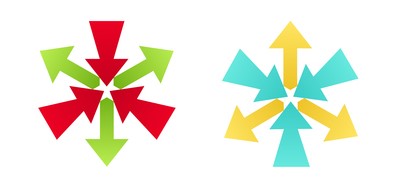Being a leader requires us to transmute the ephemeral into the persistent and ethereal into the physical. Being a leader means cultivating and nurturing the ability to transform. The most important and challenging job that I am encountering as a leader is the ability to convince people about the art of the possible. To bring to life or to paint a picture of what others have said is impossible or not done before. I am purely talking about it in the context of organisation building. This task gets particularly more difficult once you achieve some critical mass or have a few hundred employees. The challenge becomes manifold when we talk about the ‘establishment’ companies that have been around for a few decades. I deal with a diverse set of organisations across BFSI, Retail, Automotive and CPGs and without exception all of them are struggling with change management and transformation. I am consciously not using the word ‘digital transformation’ here because according to me the real challenge always is ‘human transformation’.
When we talk of transformation and leadership, one name that inevitably comes up is that of Steve Jobs and the concept of RDF (Reality Distortion Field). A term first used by Bud Tribble at Apple for Steve Jobs’ charisma and its effects on the team. As in many instances of reality beginning to mirror films and ideas, Tribble said that the term actually came from Star Trek, where in the Menagerie episode, it was used to describe how the aliens created their own new world through mental force. Mental force, persuasion, design thinking behavioural change, convergent and divergent thinking are all terms that management consultants use in the context of change management and transformation programs.
A very powerful concept that is not put in practice enough is divergent and convergent thinking. A core leadership trait is the ability to think critically and with imagination and creativity. And divergent and convergent thinking are two critical modes of thinking. Convergent thinking is a term coined by Joy Paul Guilford as the opposite of divergent thinking. It generally means the ability to give the right answer to standard questions that do not require significant lateral thinking or creativity. It is a type of thinking that we do when solving a well-defined, straightforward problem. Divergent Thinking is the ability to generate ideas by exploring many possible solutions to find one that works. As Thomas Edison once said “I have not failed. I’ve just found 10,000 ways that won’t work!” Simply put, diverge is to explore new possibilities and converge is to focus on the best route forward.

Leaders possess both Divergent and Convergent Thinking abilities. Both divergent and convergent thinking are essential in problem solving. Forrester calls this twinning – adaptive thinking, a phrase originally coined by the US military based on the research of psychologist K. Anders Ericsson, as increasingly complex battlefield conditions led it to conclude that “teaching its soldiers how to think is as important as teaching them how to fight. Ericsson describes adaptive thinking as the ability to “recognize unexpected situations, quickly consider various possible responses, and decide on the best one.” In the business world too, we live in ambiguous times and the ability to deal with it is a rare talent. The good part is there are enough tools and programs in place using design thinking that enable this art to be taught and institutionalised. Leaders are expected to know how humans think, feel, perceive, and make decisions. They will have to lead this behavioural change with people and help drive collaboration and innovation much more effectively in the future.

